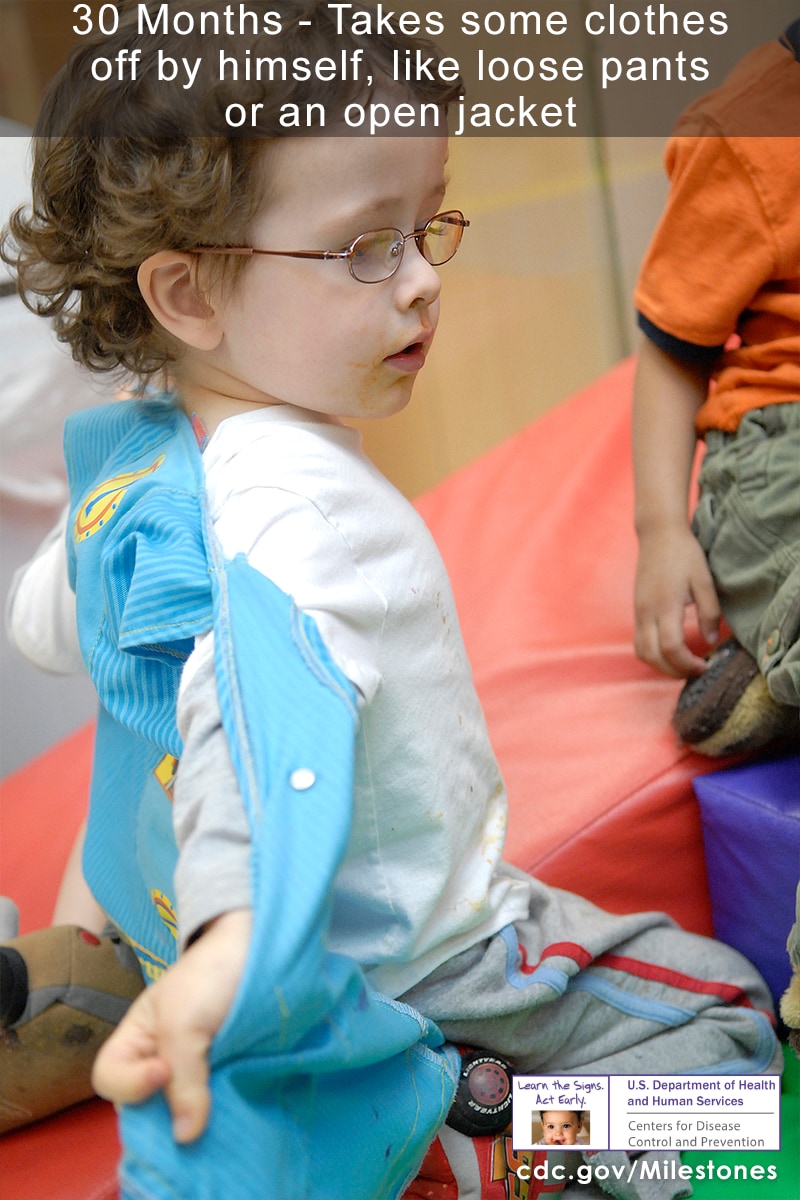30 Month Online Milestone Checklist
Plays next to other children and sometimes plays with them
Shows you what she can do by saying, “Look at me!”
Follows simple routines when told, like helping to pick up toys when you say, “It’s clean-up time.”
Says about 50 words
Says two or more words together, with one action word, like “Doggie run”
Names things in a book when you point and ask, “What is this?”
Says words like “I,” “me,” or “we”
Uses things to pretend, like feeding a block to a doll as if it were food
Shows simple problem-solving skills, like standing on a small stool to reach something
Follows two-step instructions like “Put the toy down and close the door.”
Shows he knows at least one color, like pointing to a red crayon when you ask, “Which one is red?”
Uses hands to twist things, like turning doorknobs or unscrewing lids

Takes some clothes off by himself, like loose pants or an open jacket

Jumps off the ground with both feet
Turns book pages, one at a time, when you read to her

